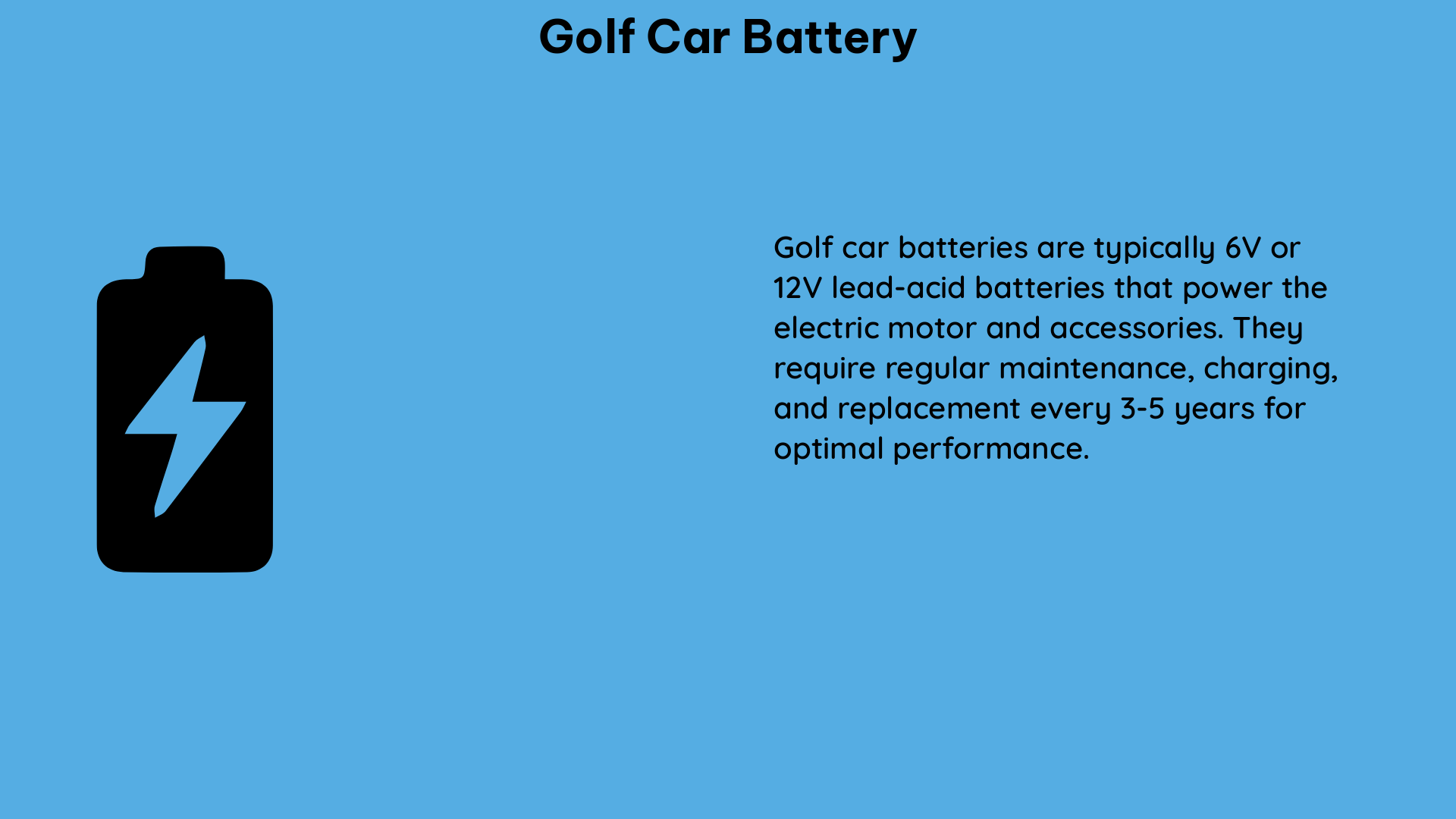Golf car batteries are a crucial component of electric golf cars, and understanding their technical specifications, performance metrics, and proper maintenance is essential for ensuring optimal usage and extended lifespan. This comprehensive guide delves into the intricate details of golf car batteries, providing a wealth of information for both novice and experienced users.
Technical Specifications of Golf Car Batteries
Golf car batteries are typically deep-cycle lead-acid batteries, designed to provide a steady current over a long period. The most common types of golf car batteries are Flooded Lead Acid (FLA), Absorbed Glass Mat (AGM), and Gel batteries. Let’s explore the key technical specifications of these batteries:
Voltage
Golf car batteries usually have a voltage rating of 6V, 8V, or 12V. A typical golf car requires a 36V or 48V battery system, which is achieved by connecting multiple batteries in series. For example, a 36V system would consist of six 6V batteries or four 12V batteries.
Capacity
The capacity of a golf car battery is measured in Ampere-hours (Ah) and indicates how much energy the battery can store. For instance, a 12V battery with a capacity of 200Ah can supply a current of 200A for one hour or a current of 100A for two hours.
Cycle Life
The cycle life of a golf car battery is the number of times it can be charged and discharged before its capacity drops below a certain threshold. For example, a battery with a cycle life of 500 cycles can be charged and discharged 500 times before its capacity drops to 80% of its original value.
Charge Efficiency
The charge efficiency of a golf car battery is the ratio of the energy used to charge the battery to the energy supplied by the charger. For instance, a battery with a charge efficiency of 90% requires 10% more energy to charge than the energy it can store.
DIY Maintenance of Golf Car Batteries

Proper maintenance of golf car batteries can extend their lifespan and improve their performance. Here are some essential DIY maintenance tips:
- Check the Water Level: Flooded Lead Acid (FLA) batteries require regular water level checks. Add distilled water to the batteries if the water level is below the minimum mark.
- Clean the Terminals: Corrosion on the battery terminals can cause a poor connection and reduce the battery’s performance. Clean the terminals with a wire brush and apply a terminal protector to prevent corrosion.
- Equalize the Batteries: Equalizing is a process of overcharging the batteries to ensure that all cells are charged uniformly. Use an equalizing charger and follow the manufacturer’s instructions.
- Charge the Batteries Properly: Use a golf car battery charger that is compatible with your battery type and capacity. Charge the batteries after each use and avoid deep discharging.
Measurable, Quantifiable Data on Golf Car Batteries
To provide a comprehensive understanding of golf car batteries, let’s explore some measurable and quantifiable data points:
| Specification | Range |
|---|---|
| Typical 36V Golf Car Battery System | Six 6V batteries or four 12V batteries |
| Battery Capacity | 180Ah to 350Ah |
| Cycle Life | 300 to 1,000 cycles |
| Charge Efficiency | Typically around 90% |
| Battery Weight | 45 to 75 pounds |
| Battery Dimensions | Approximately 10 inches wide, 10 inches long, and 11 inches high |
These data points offer valuable insights into the technical characteristics and performance capabilities of golf car batteries, enabling users to make informed decisions and maintain their golf cars effectively.
References
- 2024-2031 Golf Cart Batteries Market: Qualitative Analysis
- Buggies Gone Wild – Golf Cart Battery Discussion
- Golf Car Batteries Market Size and Share
- Buggies Gone Wild – Golf Cart Battery Maintenance
- YouTube Video – Golf Cart Battery Maintenance

The lambdageeks.com Core SME Team is a group of experienced subject matter experts from diverse scientific and technical fields including Physics, Chemistry, Technology,Electronics & Electrical Engineering, Automotive, Mechanical Engineering. Our team collaborates to create high-quality, well-researched articles on a wide range of science and technology topics for the lambdageeks.com website.
All Our Senior SME are having more than 7 Years of experience in the respective fields . They are either Working Industry Professionals or assocaited With different Universities. Refer Our Authors Page to get to know About our Core SMEs.